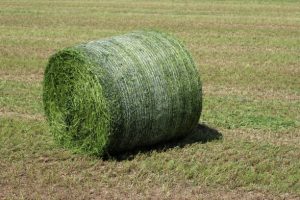I am having trouble deciding where to buy your net wrap? First, consider using a net wrap store that offers larger quantities. For example, tractor Tools Direct sells high-quality, American-made net wrap in bulk quantities. Each net wrap roll contains 5,000 feet of netting, enough to make 350-400 bales in an Abbriata baler. Longer rolls also mean less switching of rolls, which increases production. However, net wrap stores may not offer the same types of rolls, so be sure to compare their products.
Net wrap is made from recycled HDPE plastic.
 High-density polyethylene (HDPE) is a thermoplastic resin produced from the chemical molecule ethylene. It has excellent weight and strength properties. In addition, HDPE is recyclable and has several advantages over other plastics. It can be used in various packaging applications, including netting and plastic bags. HDPE is also odourless and has excellent temperature and impact resistance. Its strength makes it an ideal choice for packaging food and animal feed.
High-density polyethylene (HDPE) is a thermoplastic resin produced from the chemical molecule ethylene. It has excellent weight and strength properties. In addition, HDPE is recyclable and has several advantages over other plastics. It can be used in various packaging applications, including netting and plastic bags. HDPE is also odourless and has excellent temperature and impact resistance. Its strength makes it an ideal choice for packaging food and animal feed.
To meet the stringent demands of agricultural markets, some netwrap manufacturers have started using recycled HDPE. This material offers significant advantages over its conventional counterparts. In addition to being lightweight, it is stronger than the standard variety, requiring less plastic. Furthermore, it can withstand higher bale forces and is approved by the German DLG Signum. It also received a Polagra Gold Medal for its environmental performance.
It is non-biodegradable
In the past, livestock feed bales were wrapped in plastic sheets and netting. Now, three students pursuing doctorates in chemistry at Imperial College London have come up with a more environmentally friendly alternative: edible polymer. The students’ invention combines non-biodegradable plastic and an edible polymer. The three chemists then put these in separate bags and inserted them into the rumens of forage-fed Holstein steers. The bags were removed after filling them with rumen fluid, and the material was weighed.
The problem with a plastic Net wrap is that it never decomposes. The issue is particularly critical for cattle farmers who must feed hundreds of thousands of animals on vast fields. Often, producers cut up hay bales and leave the plastic wrapping in the field. This isn’t environmentally friendly and can also become a choking hazard for livestock and wildlife. In addition, the resulting waste will have a lasting impact on the environment.
It is difficult to recycle
Despite being recyclable, it is not easy to recycle net wrap store. This is due to its weight, pre-stretch, gauge, wrap pattern, and other factors. The most accurate way to assess how much stretch film you have used is to cut it into pieces and weigh it. Without measuring the weight of the cut piece, you can’t calculate how many films you have used and how much you can save by recycling. However, you can take some simple steps to reduce the weight of your stretch film.
To recycle net wrap:
- Cut it up into manageable pieces.
- Remove any debris or large pieces of plastic.
- Fold it into 4′ squares.
This is similar to the way silage plastic is folded. Once you have the pieces, you can recycle them. Recycling the clingy wrap will not be easy, but you can try folding it into squares. This way, you won’t be wasting valuable plastic.
It accumulates in the rumen.
Researchers have found a rumen blockage in cattle that may be caused by accumulated net wrap store. During the autopsy, researchers found net wrap in the rumens of both steer sets. The net wrap would then come up with other material and be chewed by cattle. However, it could also get stuck in the rumen’s churning, pulling the net wrap around during the digestive process. This rumen blockage in cattle could cause weight loss, diarrhea, and decreased feed efficiency.
A recent report published by Montana State University found that net wrap accumulated in the rumen of commercial cows. The study involved feed-fed cows given a ration containing 0.07 per cent net wrap for seven months to simulate the feeding process in winter. The cows didn’t exhibit any digestive problems and gained about half a pound daily. The researchers then examined the digestive tracts of the animals after slaughter and found that half of the net wrap remained in the rumen.
It is difficult to remove during winter.
Many farmers bale hay in round bales and then wrap them in twine or plastic. This method helps the hay to hold better and lets snow and rain runoff. It is also easier to move around than small square bales and does not require as much workforce.